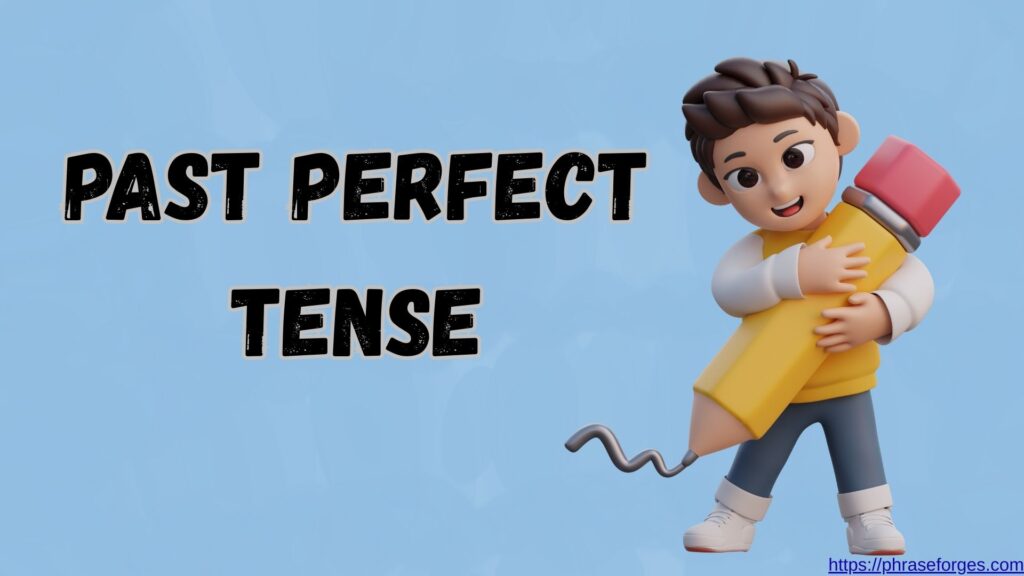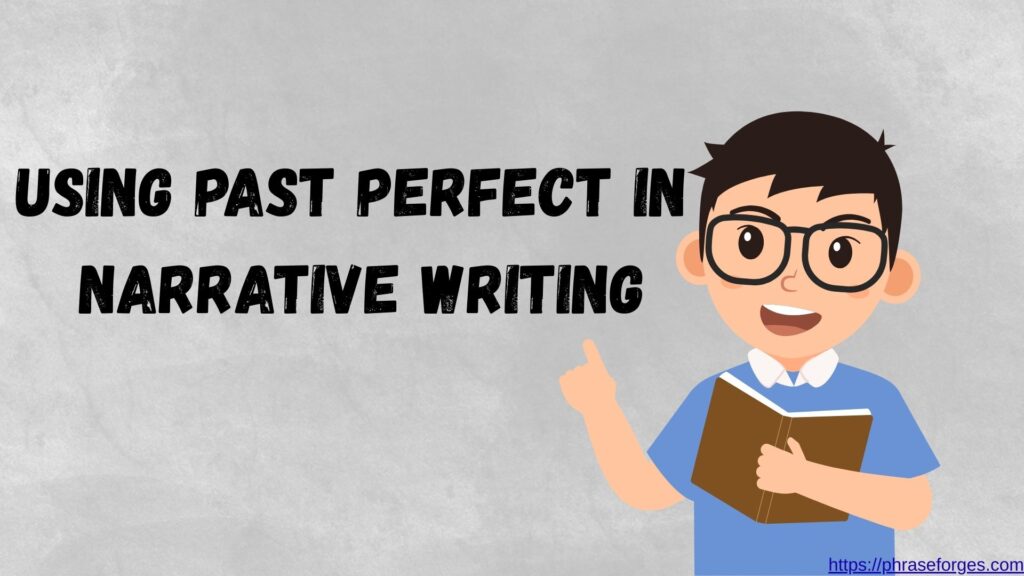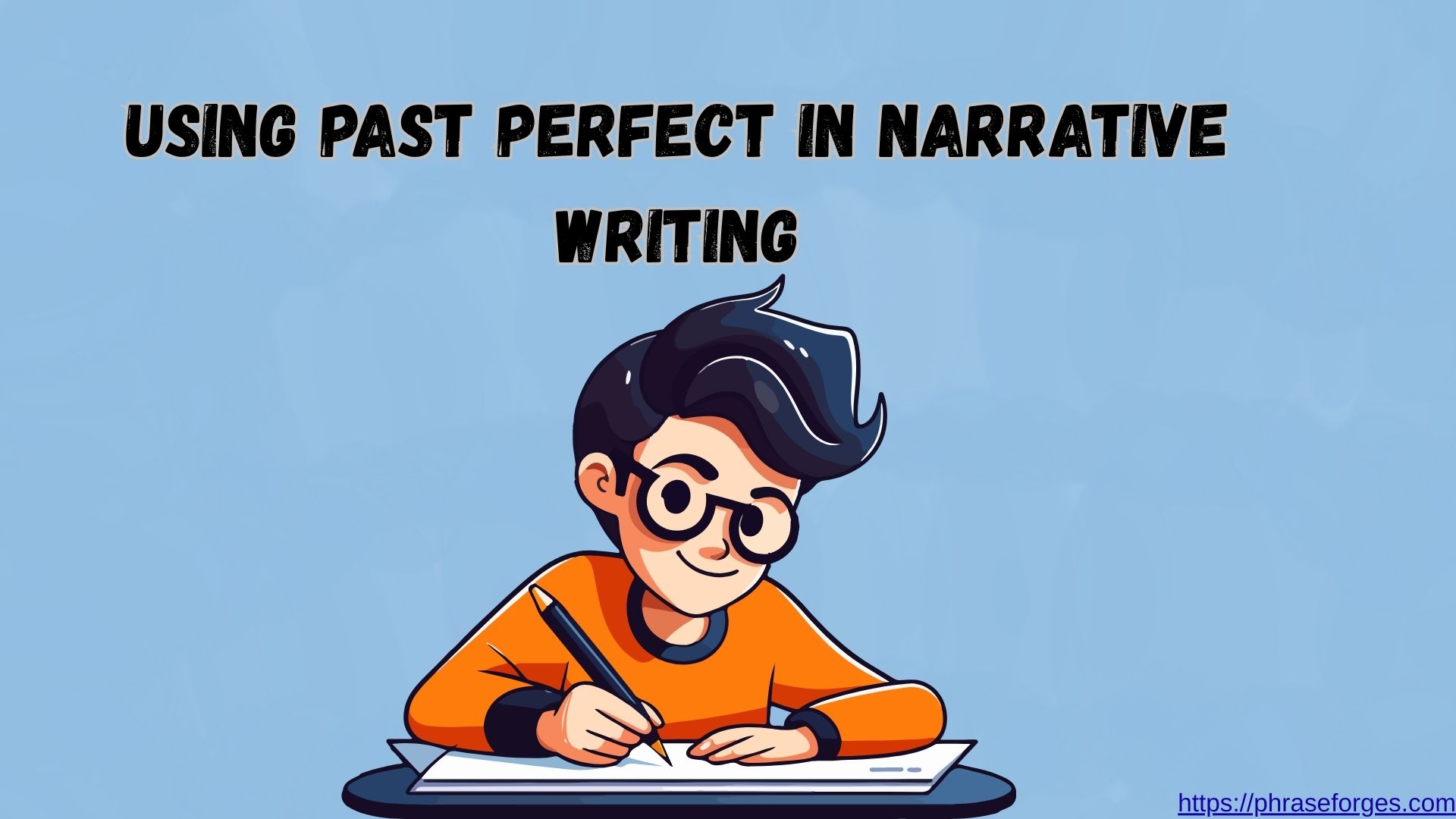Crafting a compelling story isn’t just about imagination it’s about timing. In narrative writing, one of the key tools for sequencing events and giving readers clarity is the past perfect tense. It helps readers understand what happened before another past event. Mastering this tense can level up your storytelling, whether you’re writing fiction, memoirs, or professional narratives.
Let’s explore when and how to use past perfect, backed by clear examples, rules, and realistic scenarios.
Keyword + Intro Explanation

So, what exactly is past perfect? Let’s break it down.
The past perfect tense is used to describe an action that was completed before another action in the past. It’s formed using had + past participle.
Example:
She had already left when I arrived.
This tense allows you to anchor your reader in time, giving them a clearer view of your story’s sequence. In narratives, this is essential for keeping events in logical order.
Simple Definition + Usage Overview
Here’s a quick way to understand it:
- Past perfect describes the earlier of two past actions.
- It’s often used with time expressions like before, after, by the time, or already.
Example in context:
Liam had finished the report before Maria even opened her laptop.
In this sentence:
- “Had finished” = past perfect
- “Opened” = simple past
The structure tells us Liam’s action happened first, even though both actions are in the past.
Clear Rules & Patterns
Understanding when and how to use the past perfect makes your writing smoother and more precise.
Basic Structure:
Subject + had + past participle
Use Past Perfect When:
- You want to describe an action that occurred before another past action or time.
- You’re reflecting or recalling something that happened earlier in the story.
Bulleted Rules with Do’s/Don’ts
Let’s break it into clear dos and don’ts:
✅ Do:
- Use past perfect to set the scene for your main story events.
- Use it to describe background events or explanations in character dialogue or thought.
- Pair it with the simple past to show time order.
❌ Don’t:
- Overuse it. Too much past perfect can weigh down your prose.
- Use it when both events are happening simultaneously.
- Forget to return to the simple past once you’ve established what happened earlier.
Multiple Example Sentences
Let’s look at how past perfect works in different contexts:
📝 Fiction:
Emily had never seen such a storm before she moved to the coast.
🧑💼 Business Narrative (Email):
Subject: Delay in Client Feedback
Hi Jared,
Just a quick note to explain the situation. We had submitted the proposal two weeks ago, but the client hadn’t reviewed it before their leave. That’s why we’re facing the current delay.
Lena
💬 Dialogue Example:
“I didn’t know you’d already eaten,” Jason said. “I had brought your favorite takeout.”
These help position events and actions clearly, showing cause and effect in past situations.
Before/After Examples in Everyday and Formal Contexts

Here’s a look at how past perfect changes the tone and clarity of a sentence.
| Scenario | Without Past Perfect | With Past Perfect |
|---|---|---|
| Everyday | I missed the bus because it left. | I missed the bus because it had left early. |
| Workplace | She presented the data and ran the report. | She had presented the data before she ran the report. |
| Storytelling | He found the keys in the drawer. | He found the keys where he had hidden them weeks ago. |
Notice how the past perfect version gives richer time context and adds depth to the narrative.
Common Mistakes & Fixes
🔻 Mistake #1: Overusing past perfect in entire scenes
Problem: It can feel heavy if the whole paragraph is written in past perfect.
He had opened the door. He had walked in. He had looked around. He had sat down.
Fix: Use past perfect only to establish earlier actions, then switch to simple past to continue the main timeline.
He had opened the door and stepped in. Now, he looked around the empty room.
🔻 Mistake #2: Forgetting to use it when needed
Problem: Without it, timelines become confusing.
She called him after he left.
Who acted first? Did she call after he left or before?
Fix: Add past perfect to clarify:
She called him after he had left.
🔻 Mistake #3: Mixing up verb forms
He had went to the office before I arrived. ❌
Fix: Always use the past participle, not the simple past.
He had gone to the office before I arrived. ✅
Scenario Example: Email Recap
Let’s look at how past perfect fits naturally into a business recap:
Subject: Recap of Client Meeting – Friday
Hi Natasha,
Here’s a quick summary of our client call:
- They had reviewed our original design before the meeting.
- We had prepared three alternatives to discuss.
- By the time we finished, they had already selected their preferred layout.
Let me know if you’d like a deeper follow-up.
—Alex
Why it works: Past perfect gives context to each step that occurred before the current focus, helping Natasha understand the order of events.
Quick Reference Table
Here’s a cheat sheet for mastering past perfect:
| Element | Rule/Explanation | Example |
|---|---|---|
| Structure | Subject + had + past participle | She had eaten |
| Use case | Action before another past action | I had left when he called |
| Time markers | before, after, by the time, already, yet | They had gone before we arrived |
| Common verbs (participle) | gone, eaten, done, seen, written | He had written three drafts |
| Don’t forget | Return to simple past after establishing past perfect | She had called. Then she left. |
Final Thoughts
Using the past perfect in narrative writing is like installing signposts in your story. It shows your reader where things happened in relation to everything else. The more precisely you can structure your timeline, the more engaging and easy-to-follow your narrative becomes.
From business reports to creative fiction, mastering this tense helps you build stories that flow logically, feel polished, and hold the reader’s attention. Just remember the clear rules and patterns, use it with intention, and you’ll have a powerful tool in your writing toolbox.

